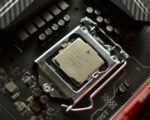Google’s Sundar Pichai has dropped a surprise: he’s been spending his downtime “vibe coding” using Replit’s AI-powered coding platform. This isn’t just a CEO dabbling for fun — Pichai says this shift in how developers work is bigger than the internet itself, and it’s opening a whole new world of possibilities.
Pichai’s candid admission in a recent chat with The Verge has sent ripples through the tech community. What exactly is vibe coding, and why is the head of one of the world’s biggest tech giants so excited about it? Let’s unpack this new trend that’s catching fire among coders and investors alike.
What Is “Vibe Coding,” and Why Is It So Hot Right Now?
Simply put, vibe coding is programming with an AI sidekick. Instead of typing endless lines of syntax, developers explain what they want in plain English, and the AI fills in the blanks. It’s like having a smart buddy who understands your idea and helps you build it piece by piece.
Pichai described his experience as almost magical. “I was vibe coding with Replit a few weeks ago,” he said, amazed at how much creative power this approach unlocks.
-
It lowers the barrier to entry for beginners, making coding feel less intimidating.
-
It boosts productivity for seasoned developers by handling boring, repetitive tasks.
-
It turns coding into a more creative, fluid process.
For many, it’s like brainstorming with a genius who never gets tired.
The concept is gaining huge traction — so much so that investors are pouring money into AI coding startups. For instance, Cursor, an AI code assistant by Anysphere, skyrocketed from raising $100 million a few months ago to $900 million recently, now valued at $9 billion. And OpenAI is making moves too, confirming plans to acquire Windsurf, another AI coding platform, for a whopping $3 billion. These figures show just how much confidence there is in vibe coding’s future.

Sundar Pichai Sees AI as the Biggest Shift Since the Internet
In the interview with Nilay Patel, Pichai compared the AI revolution to major tech shifts we’ve seen before. Think back to when the internet arrived — suddenly anyone could blog, share ideas, and connect with the world. Then came smartphones, which put cameras and video creation into everyone’s hands, sparking platforms like YouTube that changed how we consume and produce content.
Now, AI is taking that leap to the next level. Pichai called it “bigger than the internet,” which might sound bold but resonates when you realize AI’s potential to transform everything — from how websites are built to how users interact with technology.
“I think it’s an exciting time to be a consumer, it’s an exciting time to be a developer,” he said, his enthusiasm hard to miss.
And the timing couldn’t be better. With more people learning to code and software development becoming a fundamental skill, AI-powered tools like Replit make the whole process smoother and more accessible. It’s not just about writing code anymore; it’s about expressing ideas and letting AI do the heavy lifting.
How AI is Changing the Way Developers Work
Before AI assistants, coding could be tedious — endless lines of code, debugging nightmares, and syntax headaches. Now? AI takes on the grunt work, helping with:
-
Auto-completing code snippets
-
Debugging errors before they become problems
-
Suggesting improvements or optimizations
-
Translating natural language into functional code
This frees developers to focus on creativity and innovation, rather than wrestling with technical details. And yes, it helps newbies get a foot in the door without drowning in complexity.
But it’s not just about ease. The AI tools are also speeding up the development process, meaning companies can bring products to market faster. That’s a game changer in today’s competitive tech landscape.
The vibe coding trend reflects a bigger shift in the industry — the rise of AI as a true partner in software creation. This isn’t sci-fi anymore. It’s real, happening right now, and Pichai’s nod to it adds a huge stamp of credibility.
What This Means for the Future of Coding and Tech
The excitement around vibe coding shows no signs of slowing. As these tools get smarter, more intuitive, and accessible, the entire ecosystem of software development could change dramatically.
It’s also worth noting that while AI coding assistants can handle a ton of the workload, the human element — the vision, the creativity, and the problem-solving — remains irreplaceable.
For users, it means better apps, websites, and tech experiences built faster and smarter.
Pichai’s “vibe coding” confession also sends a strong message: even top tech leaders are hands-on with new tech trends, not just observing but actively engaging. That’s inspiring for developers at all levels.
With giants like Google, Microsoft, and Meta investing heavily in AI-assisted programming, the future looks like one where coding is more collaborative, more creative, and yes, way more fun.








